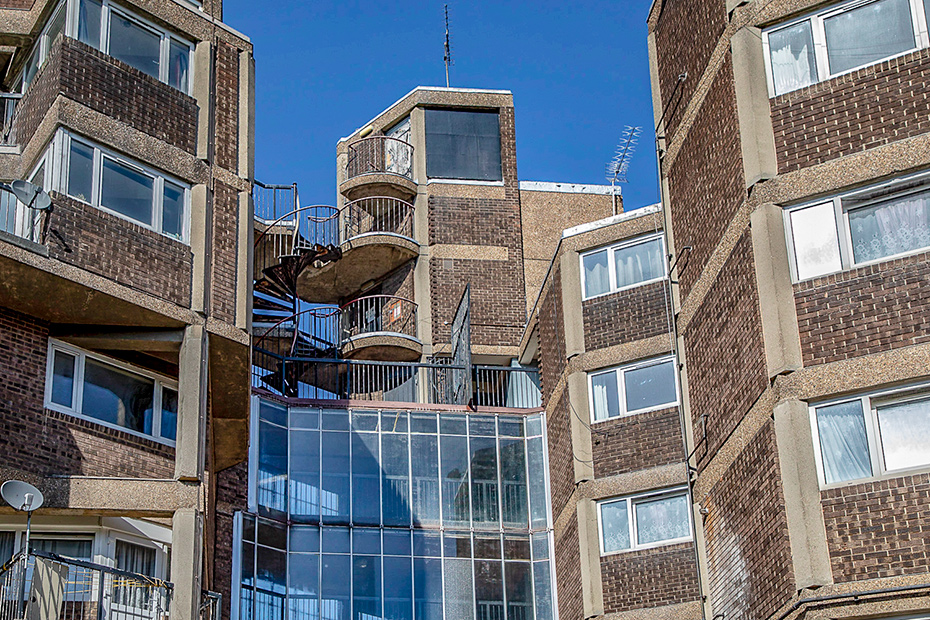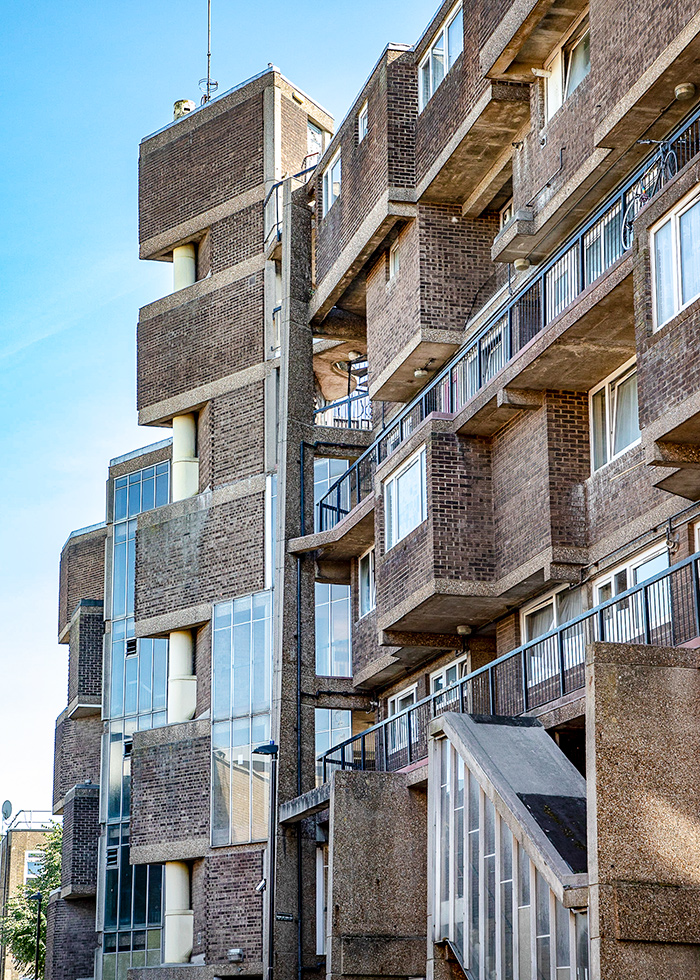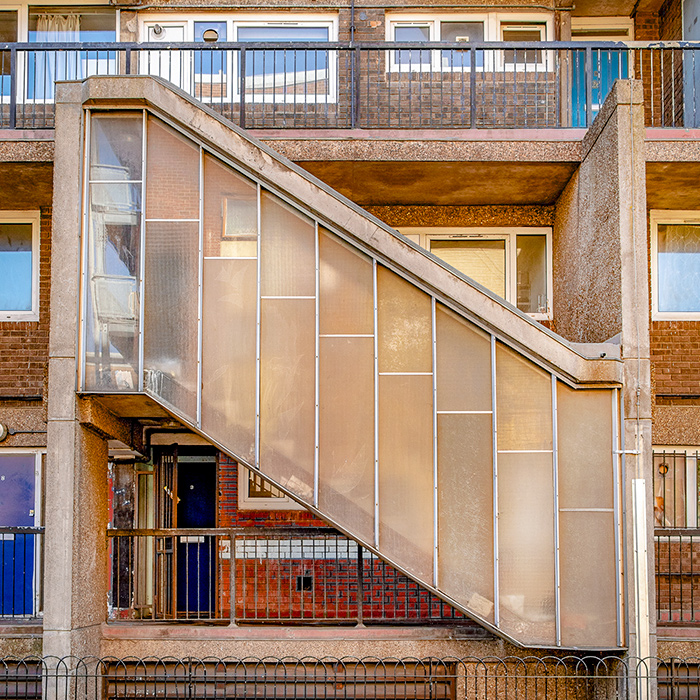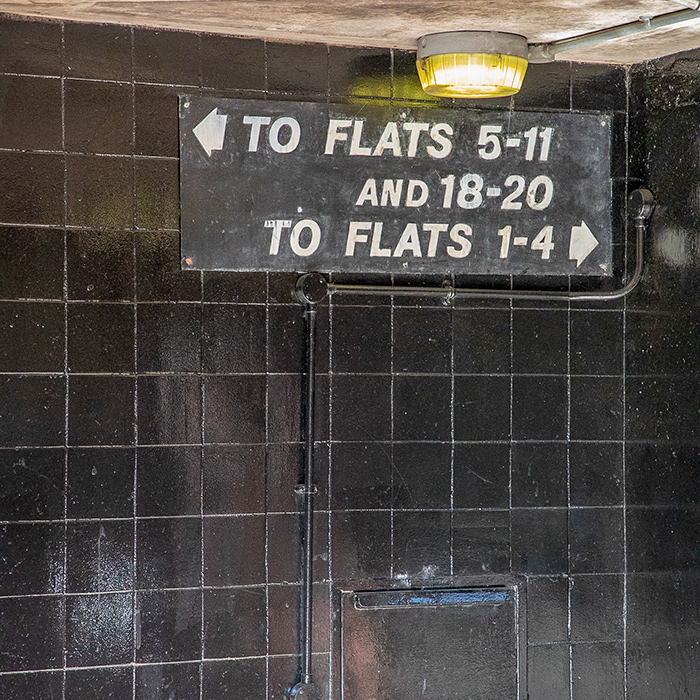ASHINGTON HOUSE
During the 1960’s low cost, high-density housing was very much in demand in London’s East End. Ashington House, located on the Collingwood Estate in Bethnal Green, presents one of the most creative and idiosyncratic solutions. It was built by Noel Moffett and his Polish-born wife Alina Zofia Bolesławicz-Moffett.
The six-storey residential building comprises 45 flats and maisonettes, stacked in modular clusters at varying floor levels. Access is gained via a glass-walled central stairwell, lift, public balconies and three external staircases that each serve only one upper floor flat.
According to Noel Moffett, the hexagonal modular plan was inspired by the interlocking basalt columns of Giants Causeway in County Antrim, Northern Ireland. The structure’s extrovert use of brickwork also clearly nods to the Dutch and German brick expressionists. Just a couple of years back, Moshe Safdie’s super-cluster Habitat 67 in Montreal had radically reset the template for urban living-in-a-box to much international fanfare.
While lacking the scale, vision and Grade II listed-status of, say, its celebrity East End contemporary Balfron Tower, Alina and Noel Moffett’s residential structure is today recognised as a leading example of London brutalism. Its innovative design helped taking postwar urban cluster housing in the UK to the next level. But Ashington House has one crucial, if built-in shortcoming: like many UK council estates, it was done on the cheap. As the structure has not benefitted from sustained levels of maintenance investments since at least 15 years, it is now fast approaching the end of its life cycle.
A May 2018 sample stock condition survey, commissioned by the London Borough of Tower Hamlets, found the estate in a generally poor state of repair. A significant number of properties were identified to be suffering from internal dampness and mould growth, rust staining, spalled concrete and surface water draining, including flooding in the basement area. A total of 3.5% of flats were deemed ‘currently non-decent’. The survey concluded a complete regeneration plan to be the most cost-effective solution to tackle the many problems. In other words: demolition and replacement by a more upmarket apartment complex.
And so, the writing is on the wall for this East End brick brute. Enjoy its sight while you can.











